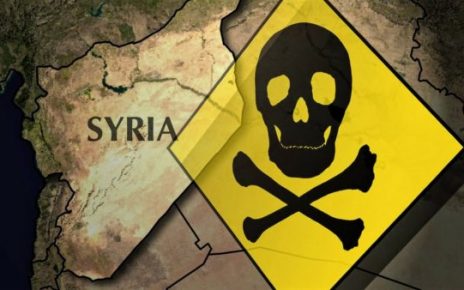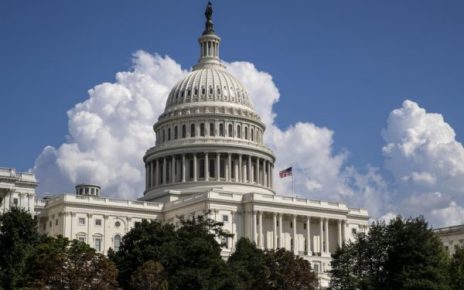If someone wanted to kill 300,000 Americans and get away with it, they could not have accomplished it more effectively than our government has accomplished it with the opioid epidemic.
If someone— let’s say good old Uncle Sam—wanted to kill 300,000 Americans, they would go about it as detailed in this step-by-step guide. This also just so happens to be precisely how our government did go about it.
Step 1 – In 1996, Uncle Sam would award a 17-year government patent monopoly to Purdue Pharma to be the exclusive supplier of OxyContin, an addictive and potentially deadly opioid painkiller. This would ensure that they had a massive multi-billion-dollar profit incentive to get as many people addicted as possible without any generic competition to keep this profit motive in check.
Step 2 – To further fuel the use of OxyContin, Uncle Sam would cover the cost of it through Medicaid and Social Security Disability Insurance (SSDI). This would ensure that there were billions of dollars available to fund the purchase of massive quantities of the addictive and potentially deadly substance.
Step 3- For further assurance more people become dependent on opioids, Uncle Sam would enact growth-retardant public policies such as mountains of regulation and exorbitant taxation, exacerbating the link between depression, poverty, and opioid dependence.
Step 4 – Uncle Sam would make pain the “fifth vital sign” and financially penalize any hospital that got poor reviews or ratings for not adequately treating pain, encouraging hospitals to hand out opioids like candy.
Step 5 – Uncle Sam would ban medical marijuana, depriving those in pain of a viable non-opioid alternative.
Step 6 – Uncle Sam would allow doctors to be sued for medical malpractice for not adequately treating pain, ensuring they prescribed even more opioids.
Step 7 – Uncle Sam would then move many opioid painkillers to Schedule 2, which would prohibit refills. This would ensure that doctors prescribed a 30-day supply for patients that needed a 3-days’ supply, just to “keep the patient from having to come back to get a new prescription if they need it.”
Step 8 – Uncle Sam would then allow the profit motive of the patent monopoly, the free money of Medicaid and SSDI, the “fifth vital sign,” and the fear of being sued for medical malpractice to continue to fuel an increase in OxyContin prescriptions until the year 2010, leaving many millions of Americans addicted to opioids.
After having created a sufficiently massive pool of addicted individuals, it would then be time to turn the “prescription epidemic” into an “overdose epidemic” and drive the death rate up into the stratosphere.
Step 9 – Knowing that many of the millions of OxyContin users were crushing the pills and snorting them, Uncle Sam would go to Purdue Pharma and convince them that they needed to make OxyContin “abuse-deterrent” by making the pills difficult to crush. This would cause a large number of people who were currently crushing the pills and snorting them to start instead melting the pills and injecting them (which is much more dangerous and deadly). This change would also cause many of the users to switch to heroin since it is cheaper and more available than prescription opioids. This would start the process of killing as many of the addicted as possible.
Step 10 – Uncle Sam would then demand that Purdue Pharma remove the old formulation of OxyContin from the market. Considering that Purdue Pharma’s monopoly patent was about to run out, they would be all too happy to oblige and get a brand-new patent on the abuse-deterrent formula, effectively restarting the 17-year monopoly period. Uncle Sam would also prohibit generic versions of the old, crushable formulation since that would allow a crushable generic to remain on the market, which would render the abuse-deterrent formula superfluous, undermining the efforts to get people to switch to injection and/or heroin.
Step 11 – Knowing that the death rate would rise as people switch to injecting and to heroin, Uncle Sam would then steadily reduce the supply of legal prescription opioids, leaving the millions of Americans that were already addicted with no place to go other than heroin and injection drug use. Uncle Sam would do this by threatening or prosecuting doctors who “prescribed too much.” Uncle Sam would also recommend or mandate the use of Prescription Drug Monitoring Programs (PDMP’s) and drug tests to catch and shut off anyone who appeared to be using more opioids than the state-sanctioned arbitrary cutoff amount.
Step 12 – Uncle Sam would also ban doctors from prescribing opioids as maintenance therapy or for gradually tapering patients off, and require doctors to abruptly cut off anyone they suspected of using too many opioids.
Step 13 – Uncle Sam would further decrease the supply of legal opioids for those already addicted by mandating a constant year-over-year reduction in the prescriptions of opioids.
Step 14 – To increase the death rate even further, Uncle Sam would ensure that the Medication Assisted Treatment (MAT) options that work, like Buprenorphine (Suboxone) and Methadone, were so heavily regulated and controlled that they were effectively unavailable to the vast majority of addicted Americans. Uncle Sam would also require “prior authorization” by managed care providers to ensure that it took as much as four weeks to get Medication Assisted Treatment. This would ensure that the vast majority of opioid users switched to injection and street heroin before their MAT prescription could be filled. Uncle Sam would also send opioid users to prison or abstinence-only rehab where they would be forced to detox cold-turkey. This would ensure that the patient’s opioid tolerance decreased to the point that when the patient came back from prison or rehab, the patient would easily overdose. Uncle Sam would also ban the use of Medication Assisted Treatment in most drug court programs, also ensuring low opioid tolerance and a high risk that relapse would result in death.
Step 15 – Uncle Sam would ban supervised consumption facilities, ensuring that drug use happened alone, unsupervised, and beyond the reach of most first-responders.
Step 16 – After vast numbers of Americans had switched to injection drug use and street heroin, and were using drugs alone and unsupervised, Uncle Sam would then make the street drugs as deadly as possible. Uncle Sam would do this by “cracking down” on the supply side of heroin, knowing full well that illegal drug manufacturers would respond by making their drugs ever more potent, or finding ultra-potent additives to substitute into their street drugs to decrease the size and weight of the trafficked substance (this is known as the Iron Law of Prohibition). That would ensure that heroin was laced with fentanyl (a substance 100 times more potent than morphine) and that eventually fentanyl was replaced by the even more potent carfentanil (a substance 10,000 times more powerful than morphine). Uncle Sam would then ban drug checking under drug paraphernalia laws, ensuring users had no idea if the substance they were about to use was laced with fentanyl. With each increase in potency and adulteration, the death rate would continue to climb higher, and higher, and higher.
There you have it: the perfect guide to killing at least 300,000 people and getting away with it. It is an absolute tragedy that this also happens to be the precise course of action the US government has taken over the past few decades to create this perfect storm of addiction and death.
Heightening the tragic nature of the crisis is the fact that the government was entirely unaware that the consequences of each step in this plan would lead to the eventual death toll currently mounting in America. This was by no means an intentional, deliberate plan to kill people; however, kill people is exactly what it has done.
It is also worth noting that, although these governmental actions listed above take the lion’s share of the blame for the problem, I am by no means asserting that other factors were not at play. Purdue Pharma clearly deserves much blame for making billions of dollars intentionally rendering people addicted and steadily supplied with opioids. Doctors deserve some blame for blindly following prescriber guidelines without reference to the unique situation of each patient. The economic malaise we currently face that has so exacerbated this crisis is the result of an astoundingly complex myriad of factors that extend far beyond just government meddling in the marketplace.
Still, though, the fact remains that the United States government has enacted and pursued a variety of policies that are directly, tangibly responsible for the severity and intensity of this crisis. It is not a stretch to say the opioid crisis would not exist were it not for the government actions listed above.
In light of this realization, a sharp change in the course of policy is in order. The government can take some actions to immediately alleviate many of the problems it has caused:
- Follow the recommendations of Human Rights Watch and end the drug war immediately. Although there are a plethora of other reasons to do this, addicted individuals need medical care, not jail time, and bringing the drug trade out of the shadow economy and into the formal market would solve many of the consistency, purity, and quality problems currently causing so many of the deadly overdoses.
- Along with ending the drug war, legalize supervised consumption facilities so that addicted individuals can utilize the drugs under safe, clean conditions, enabling them to lead relatively normal lives. These have been wildly successful in other parts of the world.
- Abolish all intellectual property laws, especially patent and copyright laws, immediately. Not only does intellectual property stymie economic prosperity and innovation to an astounding degree, but it is also philosophically incoherent. Without a patent on Oxycotin restricting the supply of alternatives and generics, the opioid crisis would never have occurred in the first place.
- Considering the admittedly difficult prospect of ending IP law, a good intermediary solution could be to abolish all patents on addictive substances. This would prevent the creation of the circumstances wherein a firm like Purdue Pharma can so aggressively market their product and have such an outsize influence on the formation of medical policies. This would also have the happy side effect of massively increasing the levels of innovation of new, more effective drugs in the pharmaceutical industry.
- Remove all legal restrictions on the use of medication-assisted treatment programs for opioid dependency so that people can receive the help they truly need.
- Remove any and all legally enforceable prescriber guidelines (especially laws against maintenance therapy doses) so that doctors are free to adjust their prescribing habits about the latest peer-reviewed guidelines and the unique circumstances of each
- Abolish Medicare and SSDI entirely, allowing mutual aid societies to re-emerge and innovative market healthcare solutions to take their place.
- Alternatively, reform these entitlement programs to preclude the use of government funds to purchase addictive substances.
Although many of these solutions sound quite radical, it takes a radical solution to rectify a radical problem of this magnitude. It’s time to stop pursuing the same failed policies that created this crisis in the first place. It’s time to start for the government to start saving lives instead of ending them.
Editor’s Note: As many may already know, The Last American Vagabond does not solely publish content that aligns with a single perspective or line of thinking. We strive to challenge even our own perspectives and are always open to a well thought out and genuine argument, even if that argument stands in contrast to some of our other work. This is a very important aspect of keeping an open mind and being open to new ways of looking at preconceived ideas. Within this article there are many points with which I disagree, such as the idea that the government was unaware of the consequences of its actions. I strongly believe the opposite. However, no one can ultimately know that for certain. The point being, as I always say, question everything, yet always be open to another’s perspective. This article covered some very interesting ideas that are worth considering, even if one ultimately disagrees.




